Submitted by Berrin Chatzi Chousein
"This exhibition shows how certain spatial typologies can be used to create spaces" says Avcioglu
Russia Architecture News - Jun 03, 2019 - 00:20 9055 views
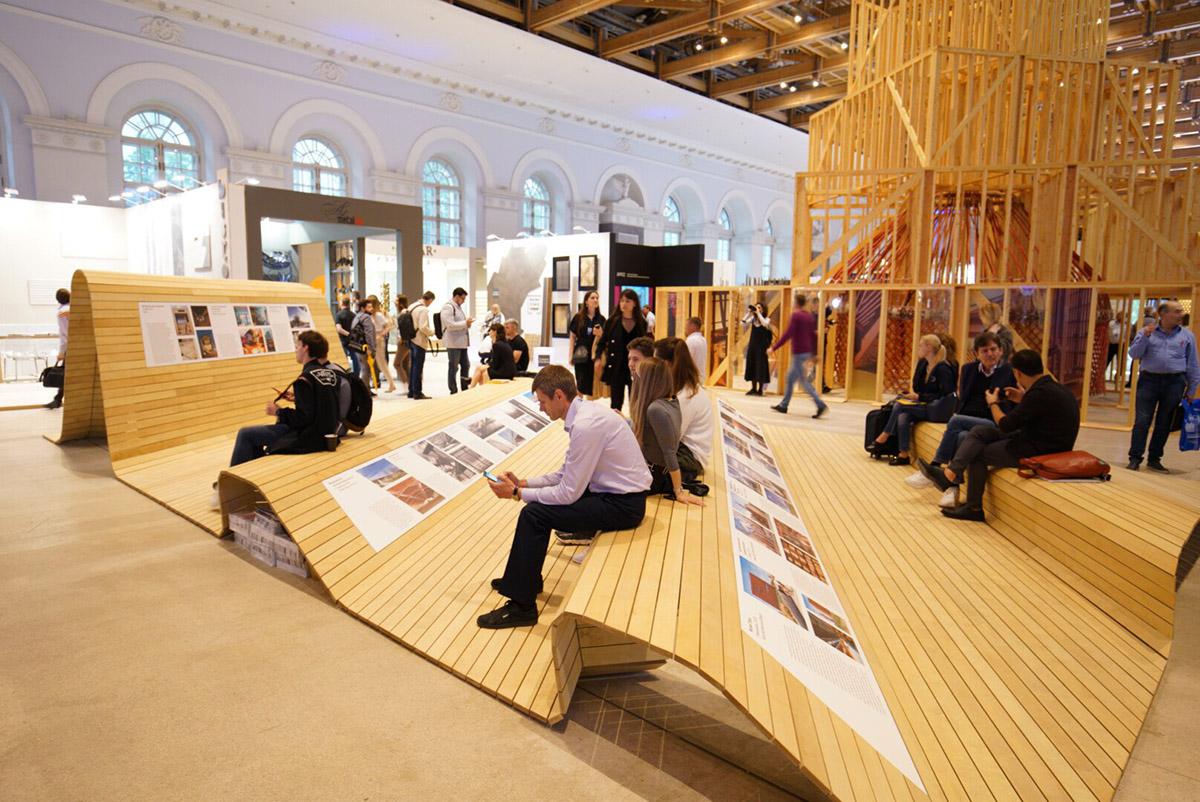
"This exhibition aims to show how certain spatial typologies such as squares, streets, terraces, plazas, walkways, at human scale can be used to create spaces for public interaction," said architect Gokhan Avcioglu, founder and design principle of GAD Architecture and GAD Foundation.
A new exhibition, titled New Publics: Contemporary Architecture and the Public Sphere in Turkey," was held at the Arch Moscow from 15 to 19 of May, 2019 at the exhibition hall "Manege", on Manege Square in Moscow, Russia.
Organized by Istanbul-based GAD Foundation and Moscow architecture practice SPEECH led by Sergei Tchoban, the exhibition was co-curated by architecture critic Gokhan Karakus and Anna Martovitskaya – chief editor of SPEECH.

Gokhan Avcioglu, founder and design principle of GAD Architecture and GAD Foundation
The exhibition, showing 15 architectural works completed in the last 10 years by leading Turkish architecture practices, focused on "New Public" spaces created within the context of hybrid building programs such as cultural centers, libraries, educational institutions, sports facilities, museums and outdoor public spaces.
Regarding the exhibition, Gokhan Avcioglu and Gokhan Karakus spoke to World Architecture Community in an exclusive interview to explore the theme of the exhibition in details and the mission of GAD.
Displayed on a series of folded wooden structures, each practice's projects were shown on elongated frames allowing to be examined by the visitors with seating places, while some of the projects are shown on the walls of the exhibition halls.
"I believe in cities and humanism and this is the kind of architecture I seek to do and promote. As architects we have responsibilities beyond design, we have larger social views that are a part of architectural practice," added Gokhan Avcioglu.

Gokhan Karakus, co-curator and consulting director of the GAD Foundation. Image courtesy of Just Consulting
"These new designs contributed to the extension of public space generating a more complex and diversified public life primarily in urban areas in Turkey," said Gokhan Karakus, co-curator and consulting director of the GAD Foundation.
"Streets, public plazas, pedestrian zones, natural areas and sports zones accessible to the public at large have been in short supply in Turkey. Architects in many of these projects have attempted to create hybrid programs where public space is created in addition to and as an augmentation of the principal program of these projects," added Karakus.

Projects exhibited at the exhibition, included: a + a Architecture - Zai Bodrum, Alper Derinboğaz, Salon - Istanbul City Museum, Brigitte Weber Architects - S International Equestrian Center, Çinici Architects - Bolluca Market Hall, Emre Arolat Architecture - Bergama Cultural Center, Gokhan Avcioglu & GAD - Borusan Music & Arts Center, M+D Mimarlık- Nedim Uysal Technical and Trade High School, Melike Altınışık Architects - Istanbul TV & Radio Tower, Mimarlar ve Han Tümertekin - Laboratory Building, AGU, Nevzat Sayın Mimarlık Hizmetleri - School of Architecture, Bilgi University, Boiler Rooms 4 & 6, santralistanbul Campus, Studio Evren Başbuğ - Bostanlı Footbridge & Sunset Lounge, Tabanlıoğlu Architects - Beyazıt State Library, Teğet - Yapı Kredi Culture and Arts, Yalın Architectural Design - Museum of Troy and Yazgan Design Architecture - Mustafa Vehbi Koç Sports Hall.
GAD Architecture produces a large number of projects in various scale in Turkey and different geographies. Led by Gokhan Avcioglu, GAD takes an unconventional approach to creating projects that push the boundaries of architectural thinking. The studio has offices in Istanbul, New York, Moscow, New Jersey, London and Dubai.
Read the full transcript of the interview with Gokhan Avcioglu and Gokhan Karakus:
Berrin Chatzi Chousein: Could you please tell us more about the exhibition? What will the visitors explore at the exhibition in a physical or intangible way?
"As GAD we believe in public, civic space especially for urban areas but also there are instances when places for public gathering and interaction our needed"
Gokhan Avcioglu: As GAD, we have been working for many years to develop new ideas on public space. For example, our first major built project back in the 1990s was the Public Park and Toilets in Kadikoy Istanbul. This was the one of the first modern public sanitary facilities in Turkey and showed our commitment to the public sphere and the architecture for the public and urban context. Later on in the 2000s we designed a number of similar buildings with an ideal for public space in Istanbul in mind such as the Esma Sultan Yali that provides one of the first event spaces on the Bosphorus that is still used today. More recently, there was our Besiktas Fish Market that took the dilapidated fish market and turned into a modern space that enlivened the street fabric in Besiktas. And lastly, in the exhibit, “New Publics” you will see the Borusan Music and Cultural Center in Beyoglu where we joined together the lively urban culture of the area with an exhibition and performance area creating and spatial and visual connections between the building and the urban district. As GAD we believe in public, civic space especially for urban areas but also there are instances when places for public gathering and interaction our needed.
Gokhan Karakus, who is a Consulting Director for our GAD Foundation, took these ideas that we have been developing for many years and extended it to include similar public buildings built in Turkey by other architects.
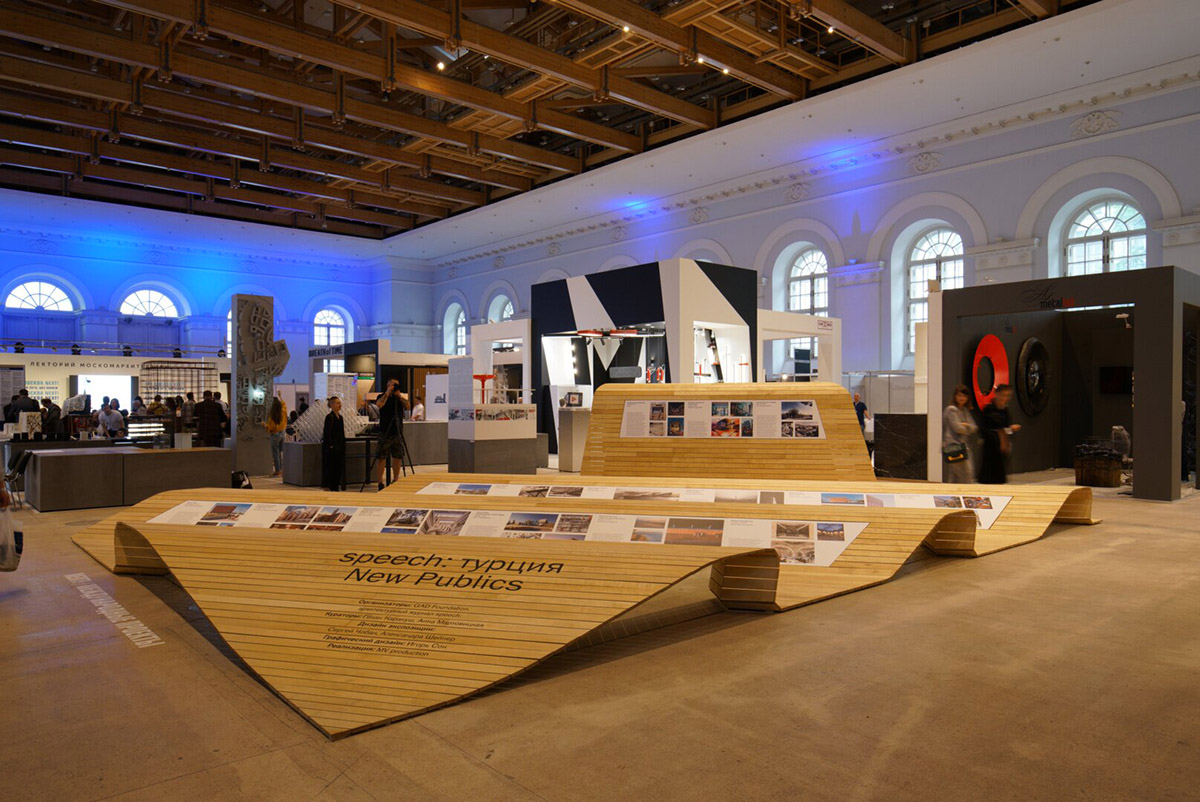
Gokhan Karakus: GAD and Gokhan Avcioglu have always been very attuned to public space and design. We share a similar concern for the fate of public space and cities. So when Gokhan asked what kind of exhibition we could put together that would show one of the key points of contemporary Turkish architecture to the rest of the world, I thought that projects that highlight architecture and public would be important. Turkey’s architecture is not very well known globally so this would be an opportunity to show our architecture but also importantly other aspects of our situation.
As such the exhibition features a selection of 15 architectural works completed in the last 10 years by leading Turkish architecture practices that focus on “New Public” spaces created within the context of hybrid building programs such as cultural centers, libraries, educational institutions, sports facilities, museums and outdoor public spaces. Architectural strategies in Turkey spurred on by the need to accommodate newly expanding cities and societies with sustainable economic and ecological models will be shown in this exhibition that will also feature digital and virtual projects showing these publics in internet and new media.
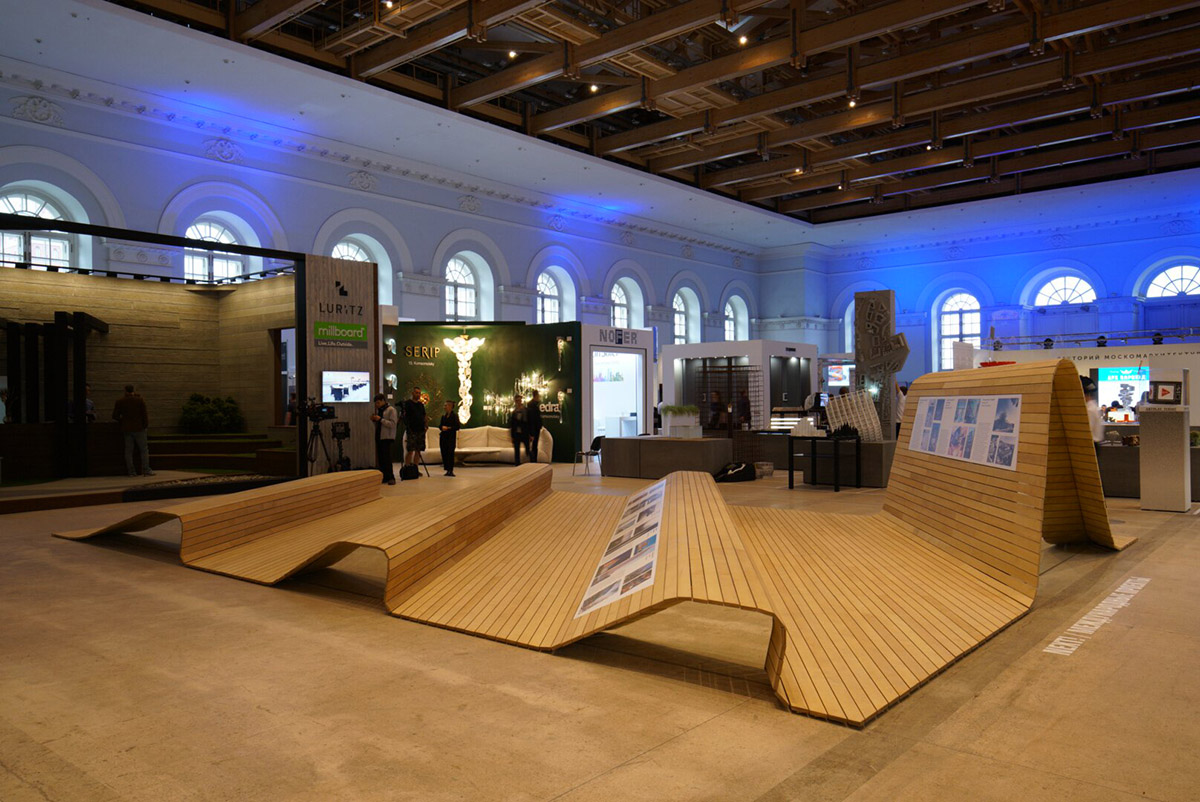
Berrin Chatzi Chousein: The title of the exhibition is “New Publics: Contemporary Architecture and the Public Sphere in Turkey”. What exactly are you aiming to show us with this exhibition? Who selected these offices? And, what did you pay attention to when choosing these offices?
"I believe in cities and humanism and this is the kind of architecture I seek to do and promote"
Gokhan Avcioglu: My architecture is concerned with the nature of space. This exhibition aims to show how certain spatial typologies such as squares, streets, terraces, plazas, walkways, at human scale can be used to create spaces for public interaction. I believe in cities and humanism and this is the kind of architecture I seek to do and promote. As architects we have responsibilities beyond design, we have larger social views that are a part of architectural practice.

Gokhan Karakus: As a co-curator, I selected the projects with the consultation of architect friends and colleagues. In particular, I wanted to showcase completed or near complete buildings where the first priority was not commercial or transactional and was largely open with public access to everyone. In these buildings buying something or some service is not as important as bringing people together to share experiences. The ability of the architecture to facilitate common, shared experiences in some cases like a factory with a sports center such as Yazgan’s Mustafa Koc Sport Center or Telecommunications Tower with a public observation tower and park such as Melike Altinisk’s Camlica TV Tower is a key feature.
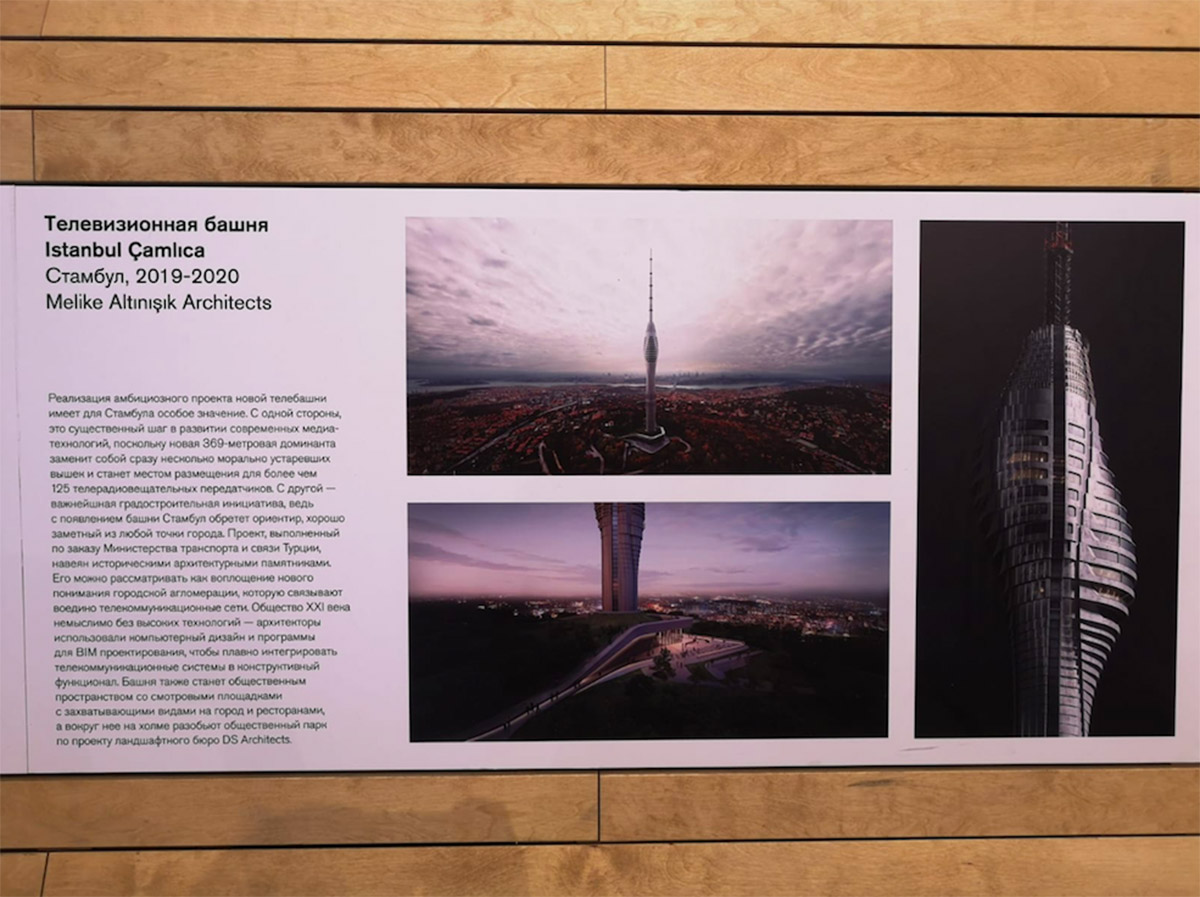
Melike Altinisik's Istanbul Çamlıca Tower is nearing completion in Turkey.

Berrin Chatzi Chousein: Could you please elaborate the term “new publics”? How would you define it, specifically in the local context of Turkey and in global sense as well? I mean, do you want to show it as a new agenda triggering innovative ways of architecture or creativity or still as “a problematic concept” in Turkey?
Gokhan Karakus: Public is a concept new to Turkey. Anatolia has had market areas put only in the 19th century did Turkey develop urban centres with diversified public paces. In my discussions on this subject I have tried to emphasize that public, civic life is still a work in progress in Turkey. A common ground open, equal and accessible to everyone is why we called it “New Publics”. It’s a public idea of space that is still being developed in Turkey with the initiatives of architects specifically. It has an ideological sense in that there is no interest in ethnic, gender or socioeconomic categorisation or division. In parallel it seeks to humanise our cities as social centers in addition to commercial activity. In Turkey this is sorely needed as we have had a tremendous amount of commercial buildings such as shopping centres and office plazas or gated and closed residential complexes only accessible to a few. Contemporary architects in Turkey have responded to this overt commercialization through these more tactical, spatial strategies to generate a New Public sphere.

Gokhan Avcioglu: I believe that we are responsible to disseminate these ideas outside of Turkey. We have accomplished a lot in Turkey as an architecture culture. This exhibition shows our potential as architects to build in other geographies with similar issues.
"This exhibition shows our potential as architects to build in other geographies with similar issues"
Our exhibition in Moscow is an attempt to create synergies with Russian architecture culture with our exhibition partners at speech: including Sergei Tchoban who is also interested in the expression of architecture in the urban and public sphere. We, at the GAD Foundation, like to work with international experts in our field and so it was a great joy to work with Sergei and the co-curator of the exhibition, Anna Martovitskaya.
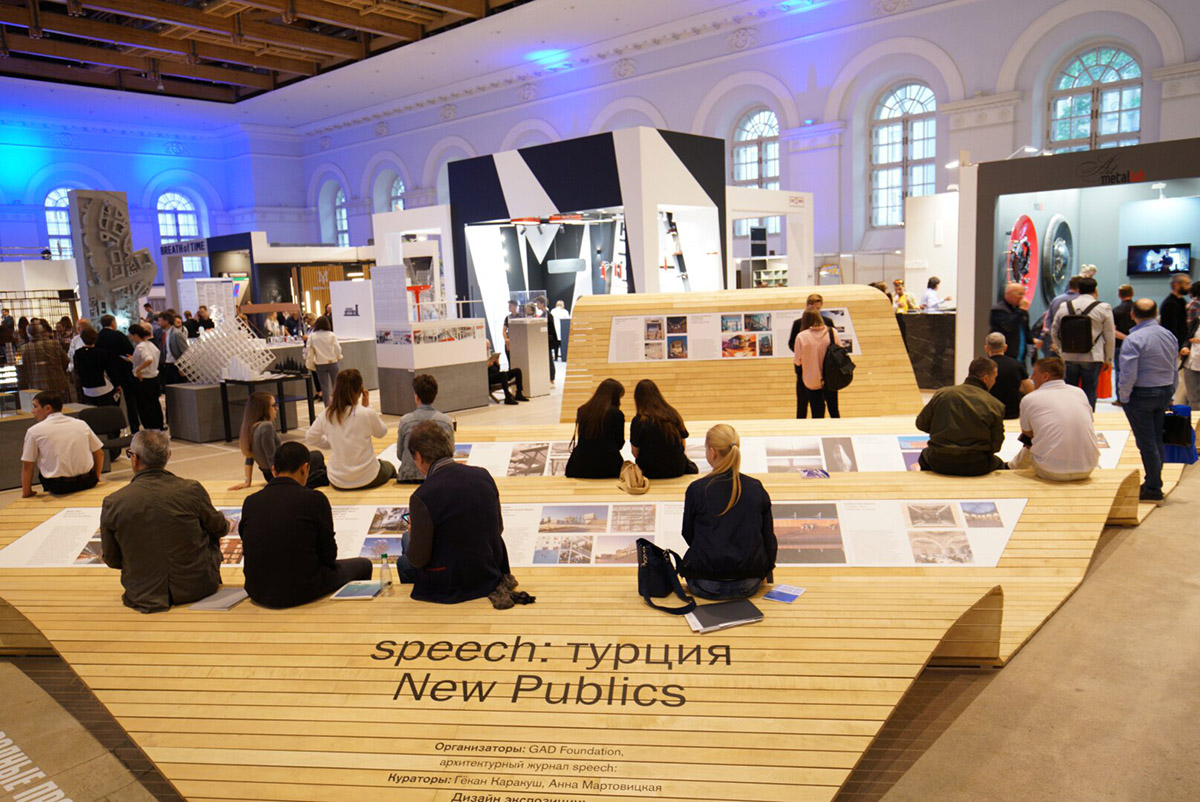
"These new designs contributed to the extension of public space generating a more complex and diversified public life primarily in urban areas in Turkey."
Gokhan Karakus: These new designs contributed to the extension of public space generating a more complex and diversified public life primarily in urban areas in Turkey. The architecture of these projects was remarkable in many ways characterized by their pragmatic approach at the local level in seeking programmatic and technical solutions while adding to the quality of civic life.
The architecture of these buildings, representing a hybrid of public and private space, is noteworthy for the important contribution they provided to the long-term sustainable dimensions of cities and local communities. Through innovative and sophisticated design strategies, the architecture of these new public buildings has been a catalyst in the growth of Turkey’s architecture culture through a focus on the quality and character of space and it’s use.

Emre Arolat Architecture's projects at the exhibition.
Berrin Chatzi Chousein: Tell us about the narrative of the exhibition. What will we see in this exhibition more; models, illustrations or virtual shows…?
Gokhan Karakus: The exhibition shows the 15 projects but importantly does do in a public space of its own. The design developed by speech: architects Sergei Tchoban, Alexandra Sheyer is a public space itself, a seating area within the Arch Moscow trade fair. So as visitors sit down and interact they are also exposed to these projects in a casual way which is very interesting. The exhibition material is not in your face but tries to casually expose you to the projects. The space of the exhibition carries you to the content, it priorities interaction over content.
In Latin there is a term “Res Publica” which can be translated at the “state of public affairs”.The design strategies employed by these architects strive to enhance the notion of public space in the urban and in some instances rural settings. This drive towards addressing the Res Publica or the “state of public affairs of public space” by architects in Turkey is result of the lack of planning and design for public areas by local governments and especially the commercial property development sector.
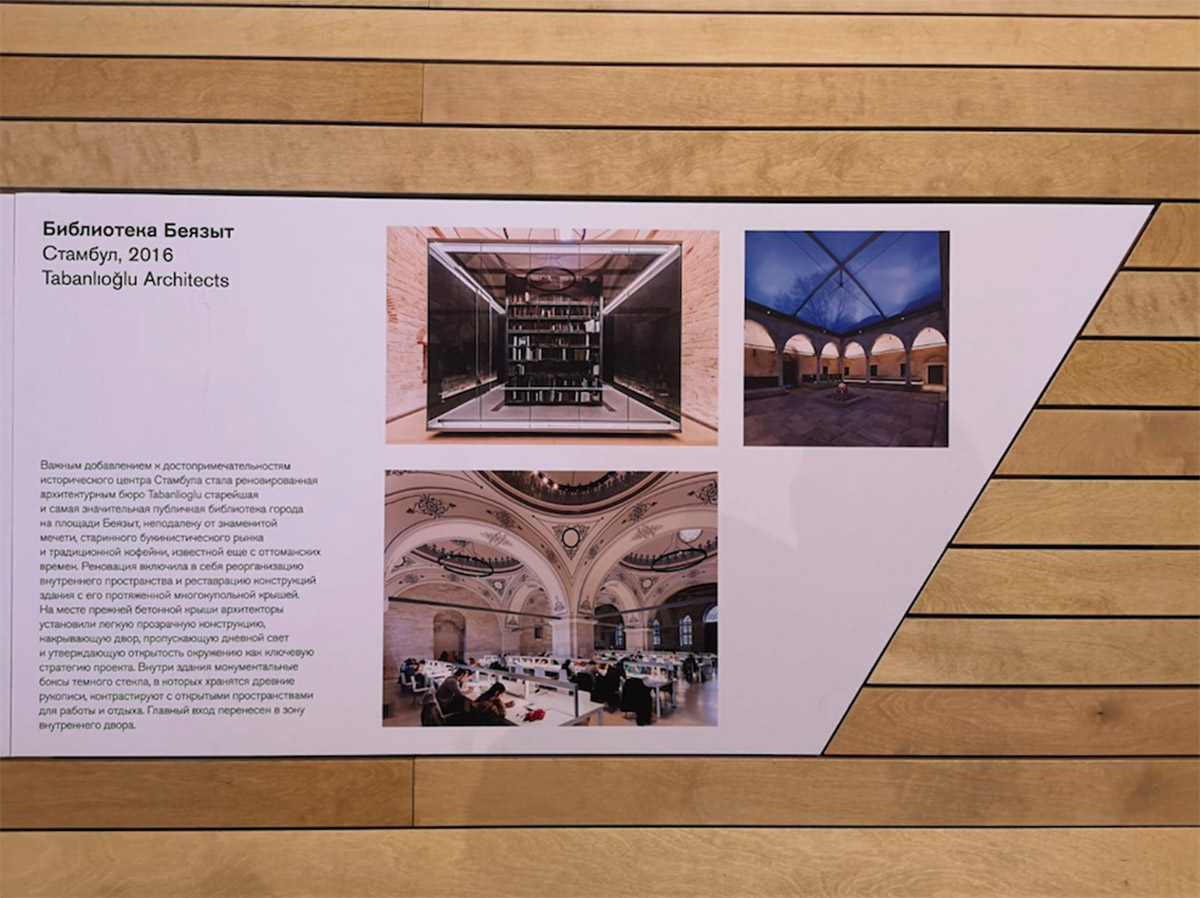
Tabanlioglu Architects' projects at the exhibition.
Gokhan Karakus: Streets, public plazas, pedestrian zones, natural areas and sports zones accessible to the public at large have been in short supply in Turkey. Architects in many of these projects have attempted to create hybrid programs where public space is created in addition to and as an augmentation of the principal program of these projects.Interaction in large-scale public spaces as a function of 21st century urbanism is the goal of this architecture and an agenda purposefully generated by the architecture. The architect has in fact increased the scope of his design responsibility as a response to the lack of thinking in this area. Many of the examples of public space you see in these projects are the result of the architect taking an initiative beyond what has been specified in the project brief.

Salon Alper Derinbogaz's projects at the exhibition.
But we should be careful to note that in many of these projects this desire for public interaction is not just one with social and utopic goals but pragmatic in it’s aspiration to achieve economic and ecological sustainability to give life to buildings over the long term. On the other hand, these projects not being commercial, they are not shopping centers or office buildings, project the sense of a larger public good that can be obtained by public minded space planning and architectural strategies. In the 21st century, activity at the local level to maximize the value of public space and spaces for interaction and production is a key dynamic in developing countries with these projects in Turkey being a future benchmark of activity.
(end of transcript)
All images courtesy of GAD unless otherwise stated.
> via GAD
